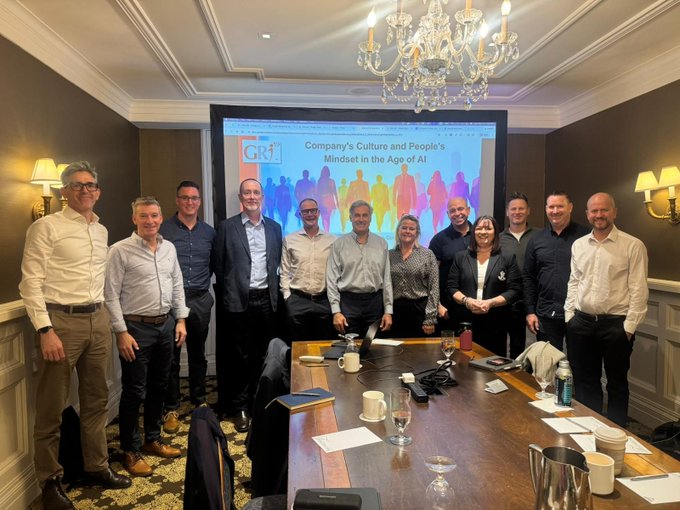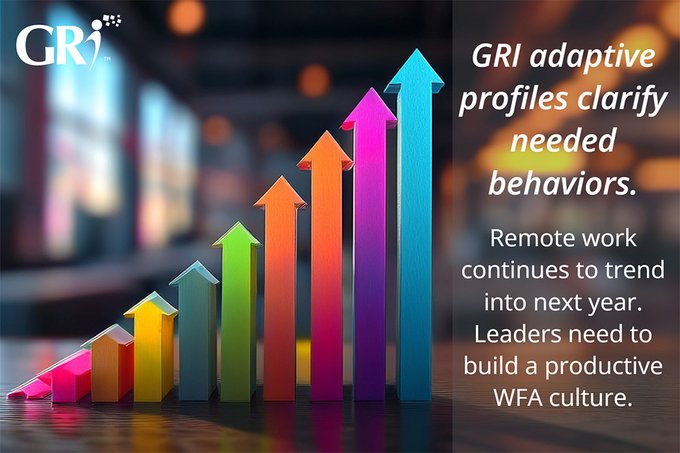Fish Tank vs. Company Culture: Tips on Selecting New Additions Well
Posted by Frederic Lucas-Conwell

Fish Tank vs. Company Culture: Tips on Selecting New Additions Well
The hiring interview is time that you have for one-on-one contact with your candidates - a chance to ask questions, to develop a better understanding of them, to sell the position, and ultimately, to make a decision.
You may be remembered for the good interviews and the good hires; you may be remembered even more for the times that it went wrong. In the interview, you are the one responsible for asking the right questions, having the right attitude and making the right decision, all in very little time.
The Fish Tank & Company Culture

Interviewing candidates to fill positions in an organization reminds me a little of creating a beautiful, thriving aquarium. Ideally, in both situations, you try to ensure that all will go smoothly, and that everyone, people and fish, will work and play well together.
Of course, as many of you may know from your own experience with fish tanks, not all fish survive this process. Things may look good at first, but if you didn't do your homework before stocking the tank you'll find that bigger fish may swallow the small ones, your beautiful male Betta is fighting with all your other fish, and some fish are only happy in schools and die of loneliness when solo. If you don't change the water or clean the filter often enough, you may see your fish getting sick.
You probably like your fish tank, so you try to solve these problems. You try new fish - of different kinds, sizes, colors and habits. You change the water, adapt the food, and add scenery and plants. You try, you learn, you get better at it. With work and patience you end up with a functioning aquarium filled with beautiful, happy fish swimming peacefully. It's a sight to calm the nerves in any dentist's waiting room.
Fish obviously don't get interviewed before they're hired onto a board of directors (or placed in an aquarium). There is no discussion about past experience, skills or compensation when deciding which fish will go into a tank. Filling a position in your company is clearly a different matter.
But in both situations, you are the one who makes the difference - You make the decisions about which fish, and which employment candidates, are most likely to survive and thrive in the new environment.
One of your primary tools for learning about your (non-fish) candidates is the job interview.
Interview Challenges
A major challenge in interviewing is making an accurate prediction about how well a candidate will perform in the position. Performance depends on many of the candidate's qualities, some of which are hard to assess. It also depends on the environment in which the new recruit will be working – something that is in constant flux and is even more complex to assess than the candidate.

On the flip side is the challenge of selling the job to the candidate. Good candidates generally have many opportunities from which to choose. If you want them to choose your company, you need to make the position appealing.
In addition, the time spent interviewing is critical to begin connecting the person to the job and the team. Efficient on-boarding, employee effectiveness, and quality management all start with good interviewing.
4 Ways To Strengthen Your Hiring Interview Technique
Modern tools are great for sourcing employment candidates. Recruiters and executive searches can work miracles in terms of locating and attracting the best players, or high-potential players, in your industry. Of course, then there is the challenge of screening for the best-of-the-best. Assuming for the moment that this is done correctly (and we'll talk more about this in another post), the missing piece is quality interviewing time.
To help you improve your interviewing, start with our four basic recommendations:
1. Address your biases. Our actions and beliefs are inherently colored by our worldview: our motivations, what drives us, and our expectations. This leads us to make assumptions about others, but what works for you may not apply to the position you are filling or to the person you interview for this job.
Conduct the interview based on what is expected from the perspective of both the interviewed person and the job. Have those expectations and details established in advance of the interview; that will help you set yourself apart from the process. Get into the candidates' shoes, refrain from judgment, and reach out to see and understand their set of beliefs.
2. Help others address their biases. Others in this process suffer from the same issue of their own slanted worldview. This includes future managers, team members and even the candidates themselves. Make sure that all understand who they are, what drives them and motivates them - some standard information from the GRI profile.
The interview is the appropriate time for candidates to start understanding the future environment they will work in, including their similarities and differences with their future managers, other directors, supervisors, co-workers or direct reports.
3. Clarify & express the job's behavioral demands. The behavioral component of the job is the most difficult piece to assess with accuracy and objectivity. The skills and experience necessary to the job are relatively easy to identify. Personality is not.
Involve different constituents to reach a consensus in the organization about what is of critical importance to be successful in this job in terms of personality. To aid this task, make use of appropriate techniques, such as the GRI's PBI survey (Position Behavior Indicator). Having such information in hand is invaluable, and helps you to interview the candidate in relationship to what the job requires.
4. Understand the candidate's story. Make use of the behavioral information about the candidate (that's the "profile" in GRI terminology) to get to know how he or she performed, not just what was accomplished. How did he manage? How did she make that task successful?
As we know, "all roads lead to Rome" - there are many roads to success. You want to know which road the candidate followed. Other important information relates to how your candidate is actually stimulated in his or her job. Ask yourself what it is about your job and your company that will invigorate and engage this particular candidate.
Better Interviews, Better Hires
Interviewing is a valuable opportunity to quickly and more accurately dig into a person's work experience, understand the candidate's differences and how they might benefit the position, and promote or sell the job to the most valuable candidates. All of the above calls for more precision and speed in the process.
Understanding how the GRI applies exactly to you, to a specific job, team, and candidate, requires knowing more about the GRI profiles and processes - not something we can do here in few lines.

However, what we advocate here, and what the GRI provides, is a quality hiring process, quality knowledge, quality communication and quality time with candidates.
The GRI helps you narrow your choices to fewer, better candidates, and aids you in providing those candidates with an early, positive, and valuable experience with you and others at your company.
Keep Your "Fish Tank" Vibrant
Next time you visit your dentist, look at the fish tank, and think about what it takes to make this ecosystem work. Remember that there is a person in charge, and because of this person's knowledge, the ecosystem and its inhabitants look good from outside, and work together on the inside.
As a hiring professional, you are in charge of your ecosystem. It's your responsibility to be more knowledgeable, to attract the best candidates to your organization and to understand who will perform best with the others already inhabiting it. Start with your interview process to keep your ecosystem thriving, vibrant and productive.
Images: 123royaltyfree.com
Latest Articles
Groupama Successful Transformation in Romania: The GRI, Catalyst for Profound Change
The history of Groupama in Romania is an eloquent testament to resilience, strategic vision, and the transformative impact of innovative management tools. Arriving at the...
Hybrid Work: A Management Revolution
The COVID-19 pandemic has acted as an unprecedented catalyst, radically transforming our approach to work. What was once a marginal practice has become the norm for many...
Leadership 3.0: Objective Insights for People-Centric Leaders
Steve, a brilliant entrepreneur, poured his heart into his work. His team at "Innovatech" was on the brink of a major breakthrough, a new app that promised to revolutionize...



